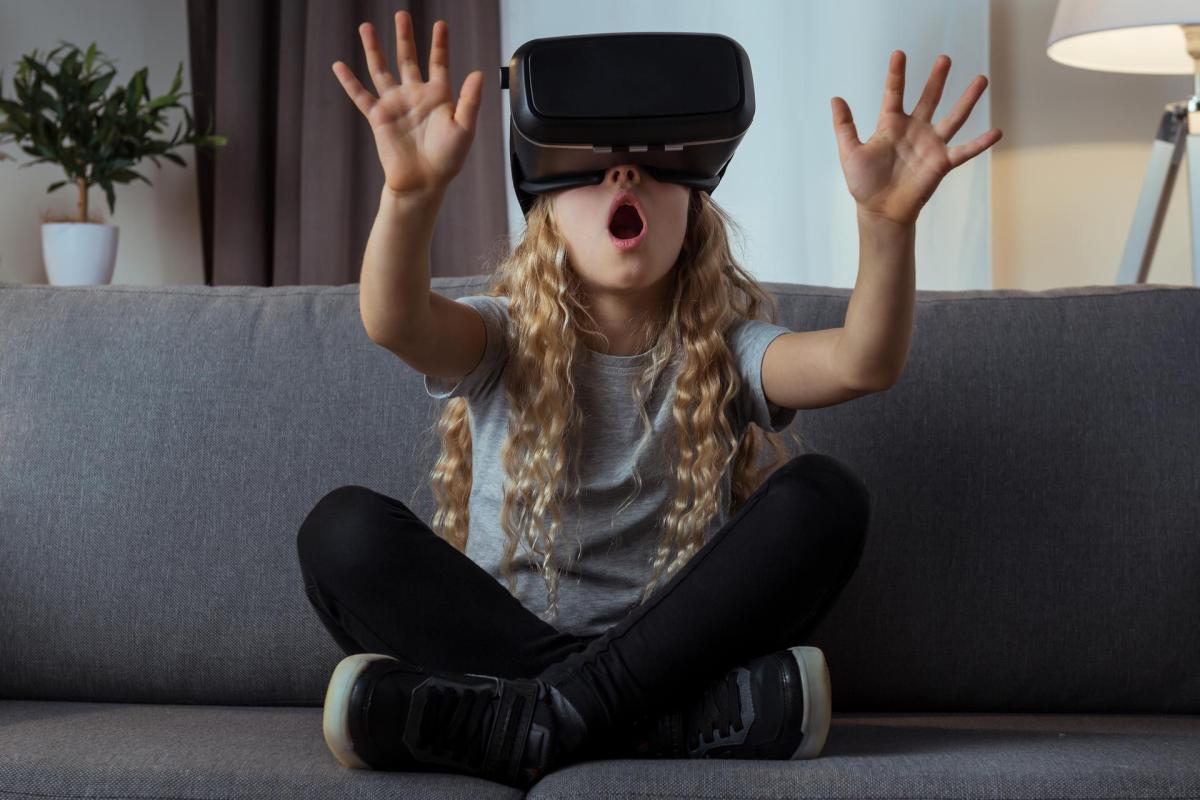Thanks to this tool, developers are able to modify the real world with a digital layer, create fully immersive experiences or a combination of both.
What are the types of virtual reality?
Technology is constantly evolving and new solutions are presented every few years. They are all aimed at improving the daily lives of thousands of users, but virtual reality has become a powerful tool, and has grown alongside others, such as 3D software and the Internet of Things. Because of this, device sales are expected to reach 68.7 million units by 2025.
Non-immersive virtual reality
This is a modality that does not require the use of full equipment or virtual reality devices. Instead, a screen, such as a computer or smartphone, is used to realise the experience. In addition, the user interacts with the environment through standard input devices such as a mouse, keyboard or controller.
One of the advantages of non-immersive virtual reality is that it is more accessible, as it does not require a large investment in peripherals. It should be noted that many of them are high-end, which makes them difficult to access for many users.
Also, it does not produce situations of dizziness or temporary disconnection that some people may experience with immersive virtual reality. It is therefore an attractive option.
Despite the limitations it may have, many interesting applications
have been designed, such as the generation of simulations or interactive environments to teach complex concepts and skills, which enhances learning. It is also already being used in the entertainment industry to make experiences more accessible and in the field of psychology to create therapies and treatments.
Mixed virtual reality
This VR model allows users to interact with objects while they are in relation to the physical environment. To achieve this, specialised vision devices are used, such as HoloLens or Magic Leap glasses, which superimpose virtual holograms on the visual field.
One of their most positive features is the ability to anchor virtual objects to the real world. This means that they can be brought into the physical environment, as they appear to be part of it.
As with non-immersive virtual reality, non-immersive virtual reality has many different practical and creative applications. Professionally, it is used in the architecture and design industry to visualise and present 3D models of buildings and urban projects in a real context. It has also been valuable in the field of maintenance and repair, where technicians receive real-time instructions via holograms while performing physical tasks.
In entertainment, it opens up new possibilities for interactive and immersive experiences. Video games can incorporate virtual elements into the user’s real world, leading to novel, more dynamic and surprising mechanics. It has even been used in live events and shows to incorporate visual effects into performances.
Full immersive virtual reality
Finally, full immersive virtual reality is the most widely known and used type. It is an experience capable of completely immersing the user in a digital environment. However, it is essential to have the right equipment, such as glasses with headphones or a helmet, and motion controllers. Thanks to them, it is possible to perceive objects as real and manipulate objects, move around and enjoy a virtual world.
Its applications have been gradually expanding, especially in the field of entertainment, but it also stands out in education, training and simulation. It is possible to use the technology to perform complete surgeries, which facilitates the training of future surgeons.
Thanks to the immersive experience offered by virtual reality, its popularity continues to grow, as it provides a unique sense of presence and participation. By using it, it is possible to be transported to virtual places of times gone by.
As VR technology advances, the focus is on improving visual quality and interaction to increase immersion and make the experience even more realistic and engaging. In a few years, we may find it hard to tell the difference between the two worlds, and we will enjoy unparalleled entertainment.
These are the most prominent types of virtual reality today. They create a wide variety of experiences, ranging from connecting the physical world with the digital world, to completely introducing us to it. Whether for entertainment or work, it is a very useful technology.











